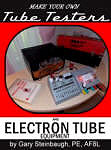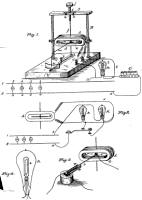 All RF Cafe Quizzes make great fodder for
employment interviews for technicians or engineers - particularly those who are
fresh out of school or are relatively new to the work world. Come to think of it,
they would make equally excellent study material for the same persons who are going
to be interviewed for a job. Bonne chance, Viel Glück, がんばろう,
buena suerte, удачи, in bocca al lupo, 행운을 빕니다,
ádh mór, בהצלחה, lykke til, 祝你好運.
Well, you know what I mean: Good luck! All RF Cafe Quizzes make great fodder for
employment interviews for technicians or engineers - particularly those who are
fresh out of school or are relatively new to the work world. Come to think of it,
they would make equally excellent study material for the same persons who are going
to be interviewed for a job. Bonne chance, Viel Glück, がんばろう,
buena suerte, удачи, in bocca al lupo, 행운을 빕니다,
ádh mór, בהצלחה, lykke til, 祝你好運.
Well, you know what I mean: Good luck!
Click here for the complete list of
RF Cafe Quizzes.
Note: Some material based on books have quoted passages.
Return to
RF Cafe Quiz #56

This quiz is based on the information presented in
Make Your Own Tube Testers and Electron Tube Equipment, by Gary Steinbaugh.
Note: Some of these books are available as prizes in the monthly
RF Cafe Giveaway.
With more than 30 years of RF engineering experience and Ham radio involvement, Gary has a very broad
and deep proficiency in electronics. His new book,
Make Your Own Tube Testers and Electron Tube Equipment, is a great assimilation
of his personal knowledge and includes some of the highest quality line drawings and photographs of
any technical book I have ever seen - and I've seen a lot of them! The preface section is also unique
in nature, followed by a short history of and basic circuit design principles for vacuum tubes. Gary
also conceived of and built a 3-dimensional physical model of the plate, transfer, and constant current
characteristic curves for a typical vacuum tube (6SN7); you've never seen this before. The homebrew
tube tester and power supply projects described in the text and built by Gary are exceptional examples
of craftsmanship.
1. Which of the following are negative properties of vacuum tubes?
a) and c)
See page 1 for a complete list of vacuum tube and transistor disadvantages
2. Which of the following are negative properties of transistors?
c) and d)
See page 1 for a complete list of vacuum tube and transistor disadvantages
 3. Who received the first U.S. patent for an
electronic device? 3. Who received the first U.S. patent for an
electronic device?
c) Thomas Edison
On October 21, 1884, Edison was awarded patent number 307,031 for his "Electrical Indicator" diode. (see page 5)
4. What is a "bogey" vacuum tube?
a) A theoretically "typical" tube statistically centered in the distribution of datasheet specifications.
Performance data was taken on a very large number of production tubes and the "bogey" tube was defined
by the results. Today we speak of "typical performance characteristics." (see page 9)
5. What is the most common type of gradual failure in a vacuum tube?
d) Low cathode emission (aka cathode depletion)
Cathode depletion occurs when the cathode is no longer capable of emitting enough electrons to replenish
the space charge. (see page 41)
6. What are the two basic types of serviceman's vacuum tube testers?
b) Cathode emission measurement only, and both cathode emission and amplification measurements
Service testers were intended to help spot bad tubes as quickly as possible, not to make accurate
measurements of tube parameters. (see page 46)
7. What is a typical vacuum tube filament temperature?
b) 800° C (~1,500° F)
Tube filaments need only to become hot enough to to provide adequate thermionic emission - about
800° C, depending on the materials used to coat the cathode: thorium, barium, strontium, etc.
(see page 40)
8. What is a sesquimultiplier?
d) A circuit that multiplies voltage by 1.5
Gary developed a custom topography to obtain a voltage multiplication factor of 1.5 in order to increase
the options of available voltages beyond those obtainable by common voltage doublers and triplers. He
dubbed it the "sesquimultiplier." The prefix "sesqui" means one and a
half. (see page 102)
9. Why are "operational amplifiers" (aka "opamps") named thus?
a) They were originally part of circuits for performing mathematical operations
Op amps were developed to perform mathematical operations, such as additions. subtraction, multiplication,
division, integration, and a host of nonlinear functions, in the days before digital computers.
(see page 145)
10. What is the word used to the measure of how significant the space charge
effect is on the beam's motion ?
c) Perveance
Perveance is the name given to the measure of how well the space charge of a vacuum tube conducts
at a relatively low plate voltage when the tube is connected as a diode. (see page 33)
Posted January 1, 2014
|











